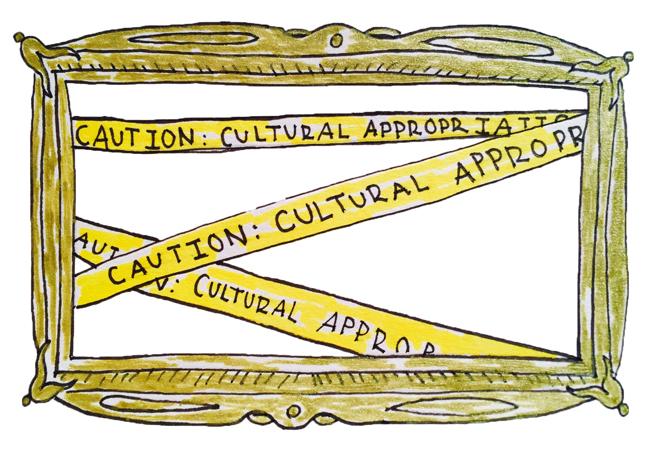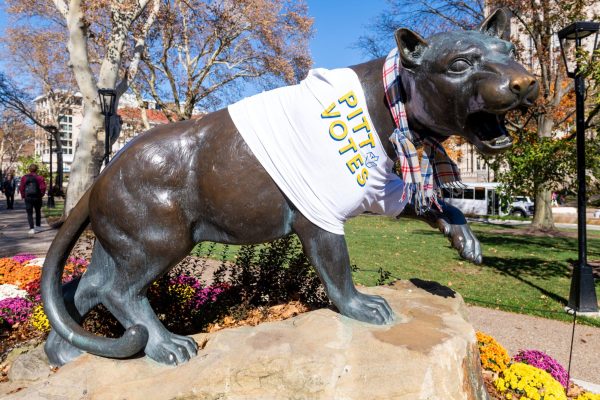Column: “Open Casket” painting trivializes black suffering
April 13, 2017
The first time I saw the photograph in an anthology of the most powerful photographs in history, I noticed Emmett Till’s pristine button up and imagined his mother’s brave hands fastening his crisp white shirt over his chest before laying his body down for his final rest.
Till, disfigured from the beating he received at the hands of two white men in 1955, lay open and uncovered at an open-casket funeral. He was 14 years old when he was murdered, and his funeral attracted national attention to the reality of racism in the United States.
Till’s pain and his mother’s courage have inspired tributes ever since, the most recent being Dana Schutz’s 2016 painting “Open Casket,” which has been on display at the Whitney Museum’s Biennial Exhibition in New York City since the exhibition’s opening March 17. His white button up looks just like it does in the famous photograph, but swatches of brown paint take the place of his face, his wounds abstracted in Schutz’s usual expressionist style.
But if you’d been at the Whitney the day the exhibition opened last month, you wouldn’t have gotten a full view of the painting. Protesters stood in the museum blocking the view, wearing gray t-shirts with the words “Black Death Spectacle” written on the back in marker, their heads solemnly bowed.
At the core of the protest is the insistence that because Schutz is a white woman she has no place depicting a black death, whatever her reasoning may be. Black artist Hannah Black articulated the claim that the painting is an example of cultural appropriation and a racial micro-aggression in a letter she sent to the curators and staff of the Whitney biennial.
“I am writing to ask you to remove Dana Schutz’s painting ‘Open Casket’ and with the urgent recommendation that the painting be destroyed,” Black said in the letter.
The rest of the art community, in turn, responded to the request for censorship.
“I find it alarming and entirely wrongheaded to call for the censorship and destruction of an artwork, no matter what its content is or who made it,” Coco Fusco, an internationally acclaimed Cuban-American multimedia artist, said.
Censorship is contradictory to the essence of art — if we accept the destruction of art that offends us, it’s a slippery slope to total censorship. Creation of art isn’t the only aspect of being an artist — respect for others’ art is just as important.
But the importance of the protest still stands. Black presents many issues with the painting, ranging from Schutz’s race to the museum’s cost of admission, but the mere fact that it’s a white artist’s depiction of black suffering does not seem sufficient to justify its destruction. I know that as a white artist my interpretation of this situation may be reflective of my race — I don’t wish to defend Schutz. I believe that the piece should never have been created in the first place — not merely because the artist is white, but because the combination of her race and her artistic technique result in a diminishing of black pain.
Claiming that race alone precludes someone from creating art fails to recognize the complexities in how medium and message combine to affect the audience’s interpretation of the piece. Artists have and always will create about things that affect them — it’s hard to say that we should limit anyone’s art from a subject that speaks to them emotionally.
If taken to be true, then stating that race precludes Schutz from depicting Till asserts that she cannot and should not be affected by his murder, and thus, shouldn’t express any empathy. We must recognize that if we want artists to tackle compelling and challenging subjects, there sometimes will be mistakes. In this case, a white artist misunderstood and misused an image of Black pain in her art. To reduce this simply to the artist’s race is to lose an understanding of what precisely was wrong with Schutz’s painting.
Instead of calling for the destruction of the painting, artists should work together to figure out how to best convey inclusive empathy in an effective way. The problem with “Open Casket” is that, while the intention was to express how the photograph of Till affected her as an American and as a mother, her poor choice of medium and technique wildly contorted the audience’s understanding of the piece.
Schutz layered paint on the canvas as a substitute for the reality of Till’s injuries. Brown paint takes the place of blood, bruised tissue and broken bones. His eyes are absent, preventing the audience from seeing how swollen they were after his attackers brutally beat him. The original photograph was impactful because Till’s mother made the grotesque nature of his wounds public, forcing the audience to accept his suffering as reality — Schutz, on the other hand, detracts from the physical injuries he suffered by simply not showing them. By choosing to depict Till in an abstract way, Schutz has essentially closed the casket, trivializing the totality of black suffering symbolized in Till’s post-mortem portrait.
And it’s not just the abstraction of black pain that is problematic — the issue is that, in combination with her race, hiding the reality of Till’s wounds is akin to years of white Americans masking the racism that this country has been built upon. She can, on the individual level, sympathize with an individual death. However, she cannot empathize on the abstract level with black suffering, a type of identity empathy reserved for people of color and which will never be an interminable issue for white people.
I am proud of the artists that have united to express their disgust over this image. People should continue to unite beyond racial or ethnic differences in order to educate and spark conversation. Art can be a tool for mediating these difficult conversations, but for art to continue to do so it must first exist, which is where I disagree with Black’s letter. No art should be destroyed under any circumstance. But Schutz should have taken into account the way that medium and technique are unspoken voices affecting how consumers react to art, and that abstracting very real, palpable suffering is to detract from the power of it.
So instead let’s allow Till’s body to speak for himself and his legacy. As his mother realized when she saw his body, only tangible suffering — not abstract pain — can inspire action and yield positive change.
Christian primarily writes on social justice and campus issues for The Pitt News.
Write to him at [email protected].








